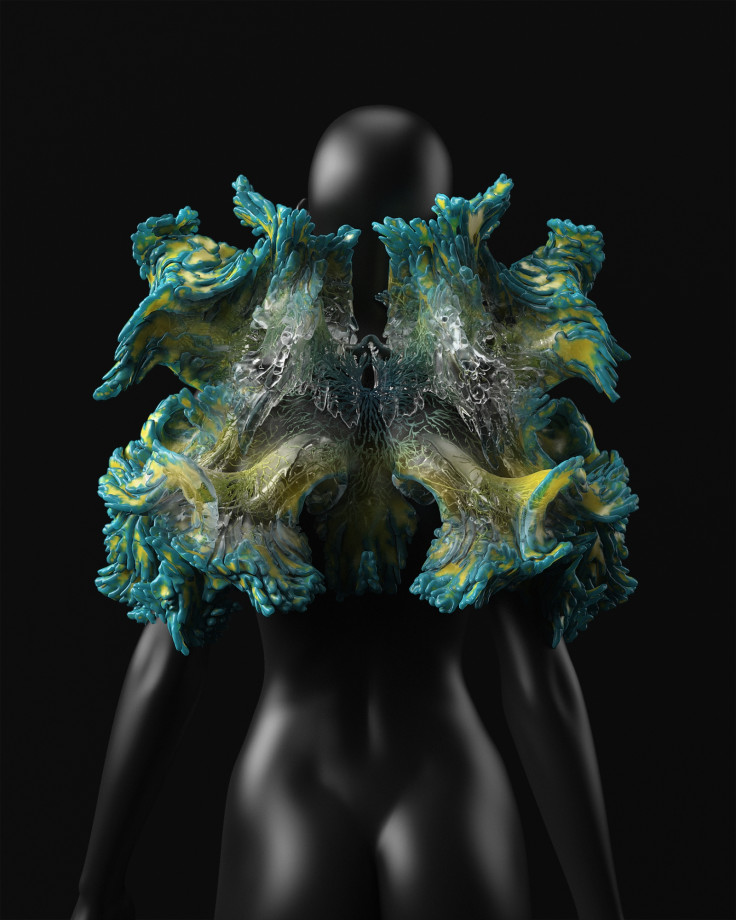MIT professor creates 3D printed 'wearable skin' for space exploration
An MIT professor has unveiled artworks that showcase 3D "wearable skin" that could revolutionise space travel clothing.
Neri Oxman, from the MIT Media Lab, created a collection of designs to showcase the opportunities 3D printing brings to the creative industry. The project, Wanderers: An Astrobiological Exploration, was unveiled by Stratasys Ltd, a leader in 3D printing and additive manufacturing solutions.
The designs are multi-material in that they embed living matter within 3D structures to augment the environment – and would be recyclable meaning they are ideal for long space missions. Each creation is suited to a different planetary environment.
Oxman said the designs would be custom made to the individual needs – acting as "second skins".
"The future of wearables lies in designing augmented extensions to our own bodies, that will blur the boundary between the environment and ourselves," she said.
"With this collection, we have designed spatially and materially complex wearables pointing towards the possibility of containing living matter that can interact with the environment. Each piece intends to hold life sustaining elements contained within 3D printed vascular structures with internal cavities, made possible with the dimensional stability and high-resolution accuracy of Stratasys' 3D printing technology.
"Living matter within these structures will ultimately transform oxygen for breathing, photons for seeing, biomass for eating, biofuels for moving and calcium for building."
She now plans to integrate living engineered cells into the wearables. Naomi Kaempfer, Stratasys Creative Director Art Fashion Design concludes, "With 3D Printing, Neri Oxman and her team take our triple-jetting 3D printing technology on an outstanding voyage in science through space, time and culture.
"We too believe that the future of textiles lies in designing customisable wearable extensions for our bodies that could very well need to sustain or enhance elements of our daily lives."

Mushtari: Meaning huge or giant, the piece is supposed to interact by Jupiter's environment and is inspired by the human gastrointestinal tract. It is supposed to consume and digests biomass, absorbs nutrients, generate energy and expel waste.

Zuhal: Saturn's Wanderer is created to adapt to the vortex storms on Saturn. It has a large surface area that would contain bacteria that converts the planet's hydrocarbons into edible matter.

Otaared: Created for the planet Mercury, the structure acts as a protective exoskeleton for the head because the planet lacks an atmosphere. The 3D printed shell is designed to contain calcifying bacteria with the goal of growing organic bone structures.

Al-Qamar: The Luna's Wanderer contains spherical moon-shaped pods for algae-based air purification and biofuel collection that would produce and store oxygen.
© Copyright IBTimes 2025. All rights reserved.






















